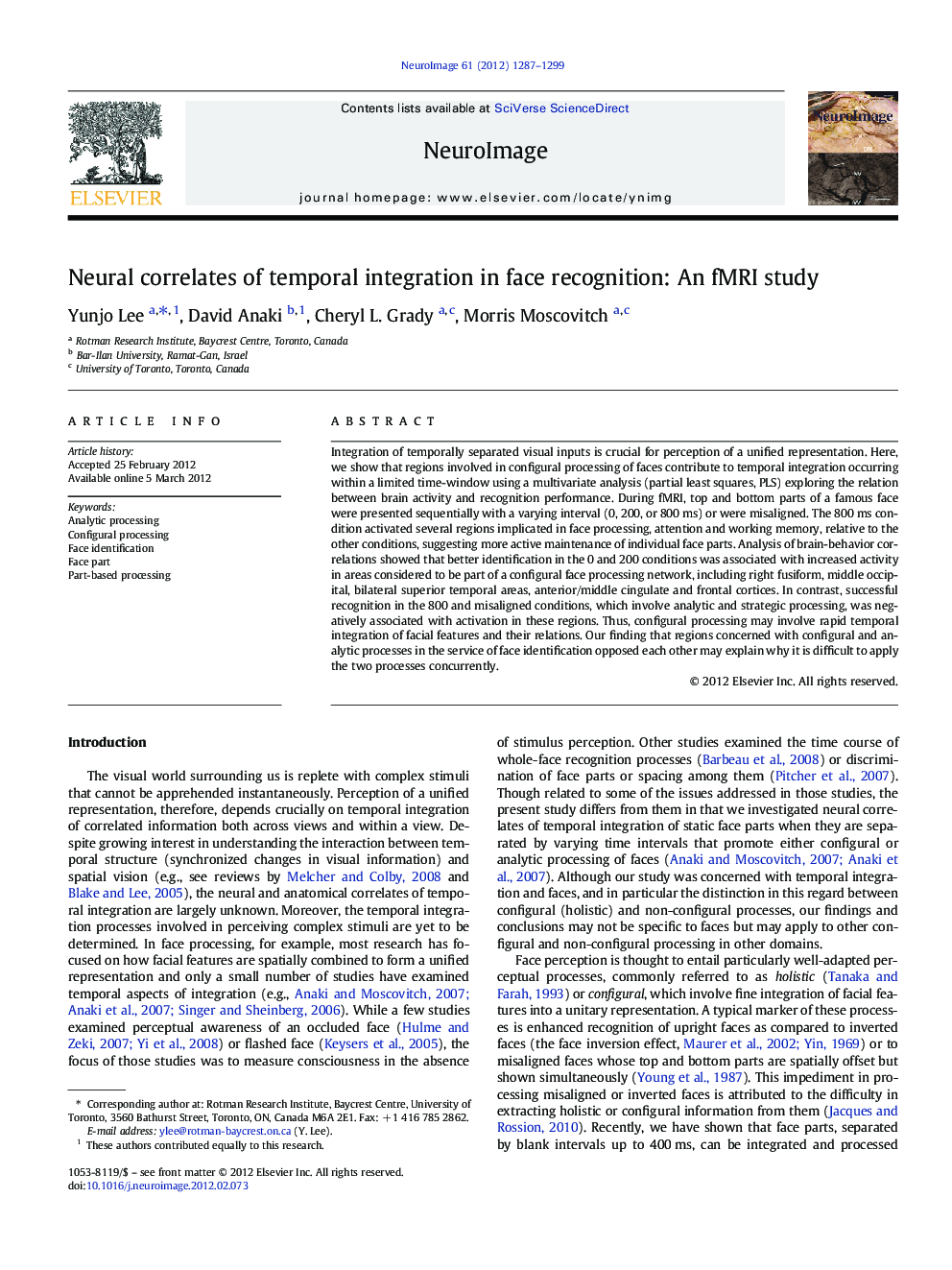| Article ID | Journal | Published Year | Pages | File Type |
|---|---|---|---|---|
| 6030888 | NeuroImage | 2012 | 13 Pages |
Integration of temporally separated visual inputs is crucial for perception of a unified representation. Here, we show that regions involved in configural processing of faces contribute to temporal integration occurring within a limited time-window using a multivariate analysis (partial least squares, PLS) exploring the relation between brain activity and recognition performance. During fMRI, top and bottom parts of a famous face were presented sequentially with a varying interval (0, 200, or 800Â ms) or were misaligned. The 800Â ms condition activated several regions implicated in face processing, attention and working memory, relative to the other conditions, suggesting more active maintenance of individual face parts. Analysis of brain-behavior correlations showed that better identification in the 0 and 200 conditions was associated with increased activity in areas considered to be part of a configural face processing network, including right fusiform, middle occipital, bilateral superior temporal areas, anterior/middle cingulate and frontal cortices. In contrast, successful recognition in the 800 and misaligned conditions, which involve analytic and strategic processing, was negatively associated with activation in these regions. Thus, configural processing may involve rapid temporal integration of facial features and their relations. Our finding that regions concerned with configural and analytic processes in the service of face identification opposed each other may explain why it is difficult to apply the two processes concurrently.
